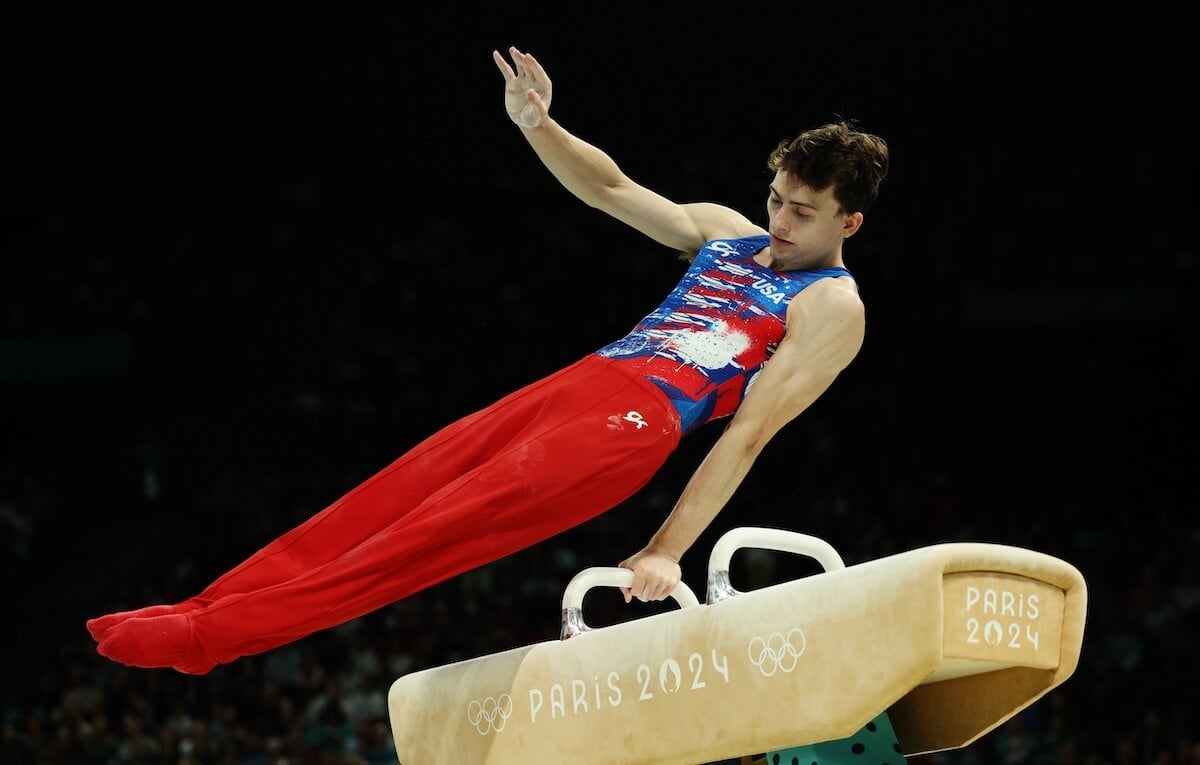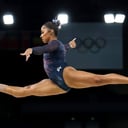
PARIS — On Saturday morning, after Stephen Nedoroscik finished his pommel horse routine, Paul Juda pointed to Nedoroscik’s forearm: “You’ve got goosebumps,’’ he said. After the men’s gymnastics team’s final, Nedoroscik gave them to everyone else.
Brought to Paris to nail one routine and one routine only, the pommel horse specialist delivered in the most dramatic of Olympic fashions. The last man up for the U.S., Nedoroscik had to wait the entirety of the meet — more than two hours — before walking up to the pommel horse. As China, the leader after five rotations, fell repeatedly on the horizontal bar, Nedoroscik stepped up to give the U.S. not only a shot at a medal, but perhaps a path to a silver.
As he finished his routine with only the slightest of form breaks, Nedoroscik pumped his arms as the crowd erupted in chants of USA, flashing flags around Bercy Arena. As he walked off, his teammates lifted him up as if he’d just won well… a team medal.
Stephen Nedoroscik had to score big on pommel horse for Team USA in the last rotation…
AND HE DID. 🤯
📺: NBC and Peacock pic.twitter.com/hkhiHpovyh
— NBC Olympics & Paralympics (@NBCOlympics) July 29, 2024
Their arms slung around each other’s shoulders, Team USA watched the scoreboard first for Nedoroscik’s score — a 14.866 — and then waited for the last competitor, China’s Zhang Boheng to finish his routine on horizontal bar.
Though Boheng did enough to move China back to silver behind Japan, the U.S. still got what it came for — its first team medal in 16 years. Their celebration was every bit as jubilant as the gold medalists, and deservedly so.
Make no mistake. Nedoroscik hardly did this on his own. He was merely the exclamation point to finish a story the U.S. has been building for four years. Dismayed after a fifth-place finish in Tokyo, the USA Gymnastics coaches set about intentionally changing their approach. Realizing their routines lacked the difficulty they needed — they came into Tokyo a solid six points behind from the highest level of the competition — they made a concerted effort to demand more of their gymnasts.
It is, of course, one thing to create harder routines; it is another to execute. At the most important meet, Team USA executed. Save a few minor hops and form breaks, the men essentially hit all 18 of their routines. Only one set — Paul Juda’s high bar — scored below 14 points.

GO DEEPER
How is Olympic gymnastics scored? A guide to understanding the competition
The U.S. was a model of consistency, building steadily throughout the meet, relying on different gymnasts at every turn. Asher Hong took one hop on his highly difficult vault, helping launch the U.S. from fifth to first in the standings after two rotations; Frederick Richards planted his feet like glue on the last tumbling pass of his floor exercise, to keep them in contention. Juda followed up what he termed the meet of his life in qualifying with an even more solid night here, and Nedoroscik doing what he was here to do.
Maybe no one, however, earned the medal draped around his neck more than Brody Malone. A little more than a year ago, he suffered a catastrophic leg injury. Doctors worried he might not walk, let alone compete and up until the start of the Olympic Trials, he still wore a clunky brace for vault and floor exercise. The lone returning Olympian on this roster, Malone struggled during qualifications, failing to advance to the all-around final or any individual event finals.
When it counted, Malone came through. The stoic on a team of fist-bumping, high-fiving hype men, he stepped up for what could be the last routine of his life, on the same pommel horse he started out dismally on Saturday. He calmly and methodically executed his routine, dismounting and showing what is for him, a torrent of emotion. Malone allowed himself a hulk flex before heading to his teammates for bear hugs.
Required reading
(Photo: Jamie Squire / Getty Images)